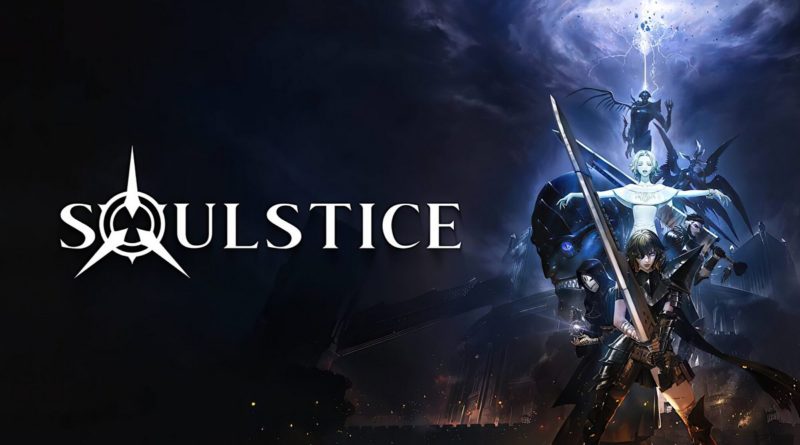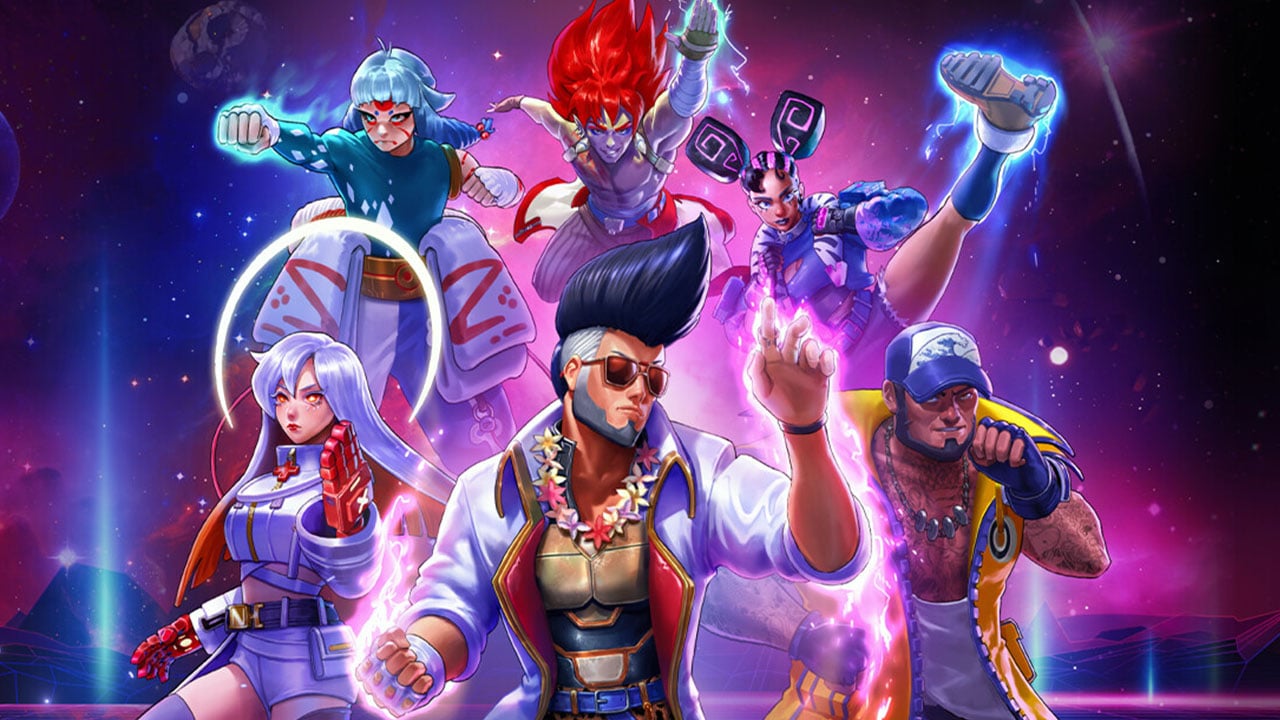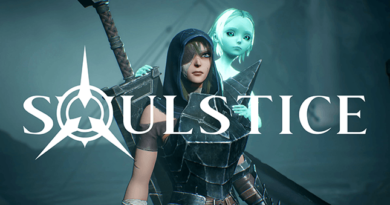Soulstice Review (PS5) – Soul Sister
Dark and stylish new melee brawler Soulstice wears its influences firmly on lead character Briar’s armoured sleeve – leave the guns at the door and this is Devil May Cry from an alternate timeline. A single-player third-person combat scenario, a world-threatening force of demons, combat encounters that are concerned more with scoring combos you perform and the flow you achieve, challenge rooms, and even red orbs to collect to purchase and level skills.
Yep, there’s a lot of Devil May Cry in here. But Devil May Cry can be awesome. The ‘Soul’ in Soulstice led me and possibly others to think this would be a high difficulty, slow combat, on a knife edge of being killed, souls-like experience. There’s a currency to the word now. But it was refreshing to see not every third-person action title is going in that direction. We need fast-paced, visceral, combo-heavy slashers too.
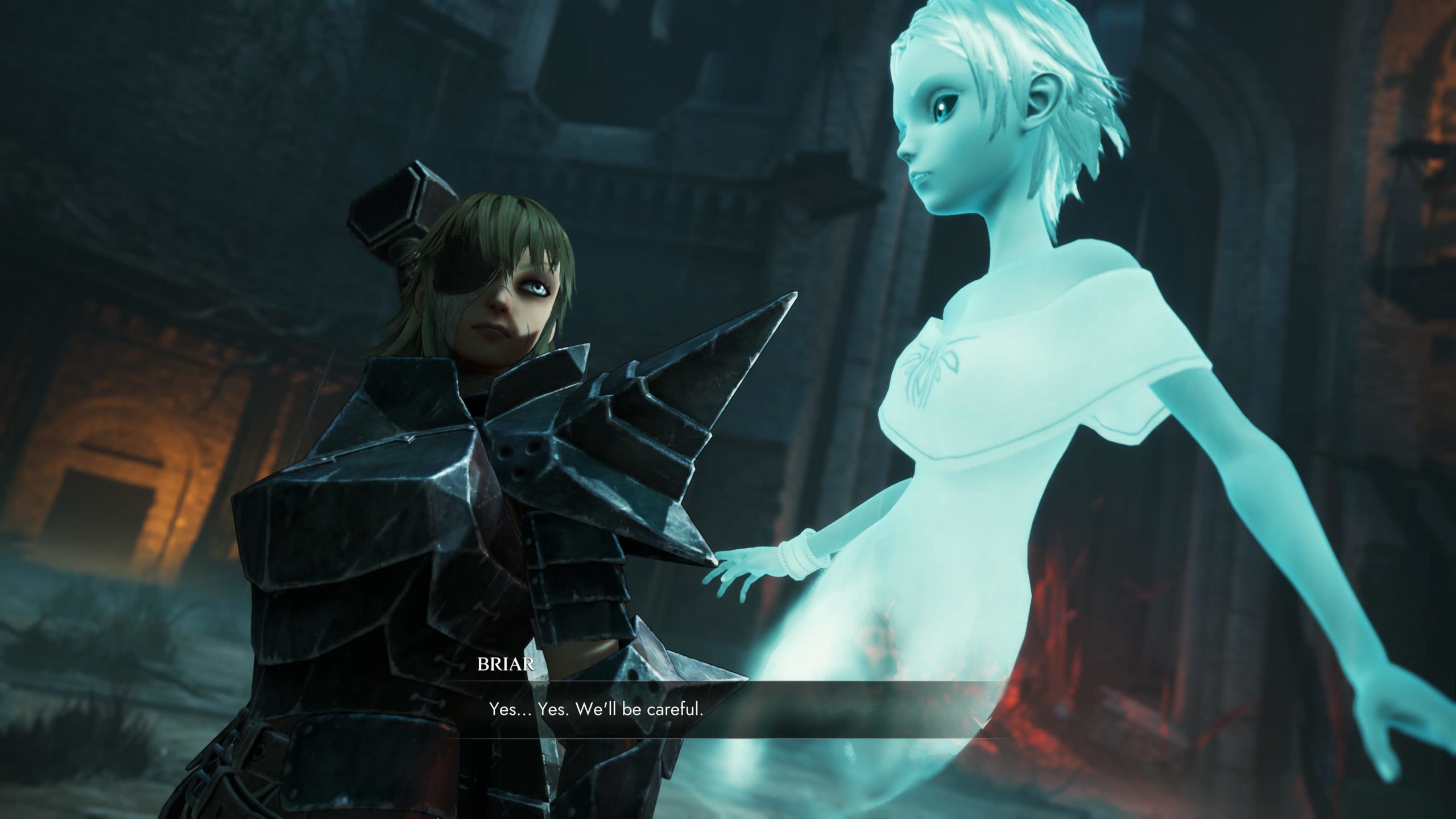
You play as Briar, but also as her sister Lute, both voiced by Stefanie Joosten, who played Quiet in Metal Gear Solid: The Phantom Pain. Briar is an Ashen Knight, your brash melee character, but also, thanks to the Shade (or ghost) of her dead sister bonded to her, a Chimera. Chimera are a breed of ancient and sacred warriors who can face the Chaos that pours out should a tear in reality happen. Would you look at that? A tear in reality has happened.
Soulstice really throws you into the thick of the story, where explanations are a luxury drip-fed to you over the course of a fifteen to twenty-hour playthrough. There’s a tear in the sky and Chaos streaming out that’s turning the whole of Ilden city’s population into ravenous wraiths who devour any survivors. Only dual warrior Chimera can stand against it. But at least to start with you’ll get nothing about Briar and Lute themselves. Who are they? Why are they here? How did Lute die and get attached to her sister? You’ll have to keep going in the dark for a while to get the answers.
I thought fine, I don’t need all the answers upfront. However some 4-5 hours in, 5 chapters or so, I had still only barely entered the city, and I still knew next to nothing about who these two are or were. They’ve been sent in to seal this tear in the sky, and sometimes they can ask lore-type questions of their handler Layton, a kind of sardonic shop-cum-priest figure, whose explanations rarely do more than raise more questions. The answers come eventually, but to be honest, they were very predictable and not very interesting when they did. Soulstice uses the worn-out mechanic of memory sequences to fill in the blanks I really wanted in the main story. Flat tableau-based memory sequences with voiceover – not exactly inspiring when you’ve worked so hard for the answers.
Don’t come to Soulstice for the story. It’s a shame because Briar and Lute look interesting and their backstory and links with the main story could have been fascinating. Even Briar fighting with a kind of corruption inside her is really not portrayed in any interesting way, far more useful for combat than backstory. Briar and Lute are just kind of there, written without humour or even convincingly as sisters. To break the mood sometimes would have been great – revealing some sister bickering or banter, and convincing me they even knew each other.

Soulstice is an exceptionally dark and dingy game. Turn your brightness up because in many parts you’ll barely be able to see what’s going on. Wooden docks give way to a massive hulking stone fortress, and that’ll be your home for a chunky portion of the game. There’s next to no foliage, or variation as you go from one dingy room to another. Their purposes are undefined, it’s just a massive fortress city mostly infested with debris and red crystals. As you explore and progress, the interiors give way to exteriors, the darkness gives way to the blizzard-covered centre of the city where the tear is they are trying to reach, but on the whole, most of Soulstice looks the same. One locale blends into the next into the next – eventually it will feel like one homogenous blob of a fortress.
It’s as much a platformer as it is a brawler. Getting around the fortress city involves double jumping about and using Lute’s field abilities (more on them in a moment) to create platforms to reach new areas. The fortress city is very linear in level design, even swinging the camera to aim down the next road to take. I never got lost, despite the rooms all looking the same. A side effect of this is that it’s also very easy to find hidden orbs, crystals and challenge rooms – you just need to go the way the camera isn’t facing and voila! These challenge rooms will be familiar from many of the Devil May Cry games, warping you away to a separate arena to face waves of enemies under certain conditions where you can win green max health orbs or Lute enhancement orbs.
In Soulstice’ favour, there’s lots of very nice high contrast lighting and reflections glimmering. For a stone fortress, it’s a nice stone fortress, but it rarely gets beyond that. The cutscenes are also very nicely directed and animated, with plenty of good close-ups and interesting angles. Great work has been done to make Briar move and look as badass as possible at all times.
Apart from the dinginess, and the dark soulless fortress, another area that really isn’t strong visually is the enemy design. You’ll be facing pretty dull iterations of ugly men with bubbly stuff on their faces, then armoured versions, then ones with projectiles. There are some more interesting wraith-type enemies and red crystal-covered types as you progress, but even then they aren’t anything you haven’t seen before. They don’t give Soulstice any real identity. And it’s strange because Devil May Cry comes laden with so many memorable enemy types, from the Marionettes, to the shape-shifting panthers to the Death-Scissors.
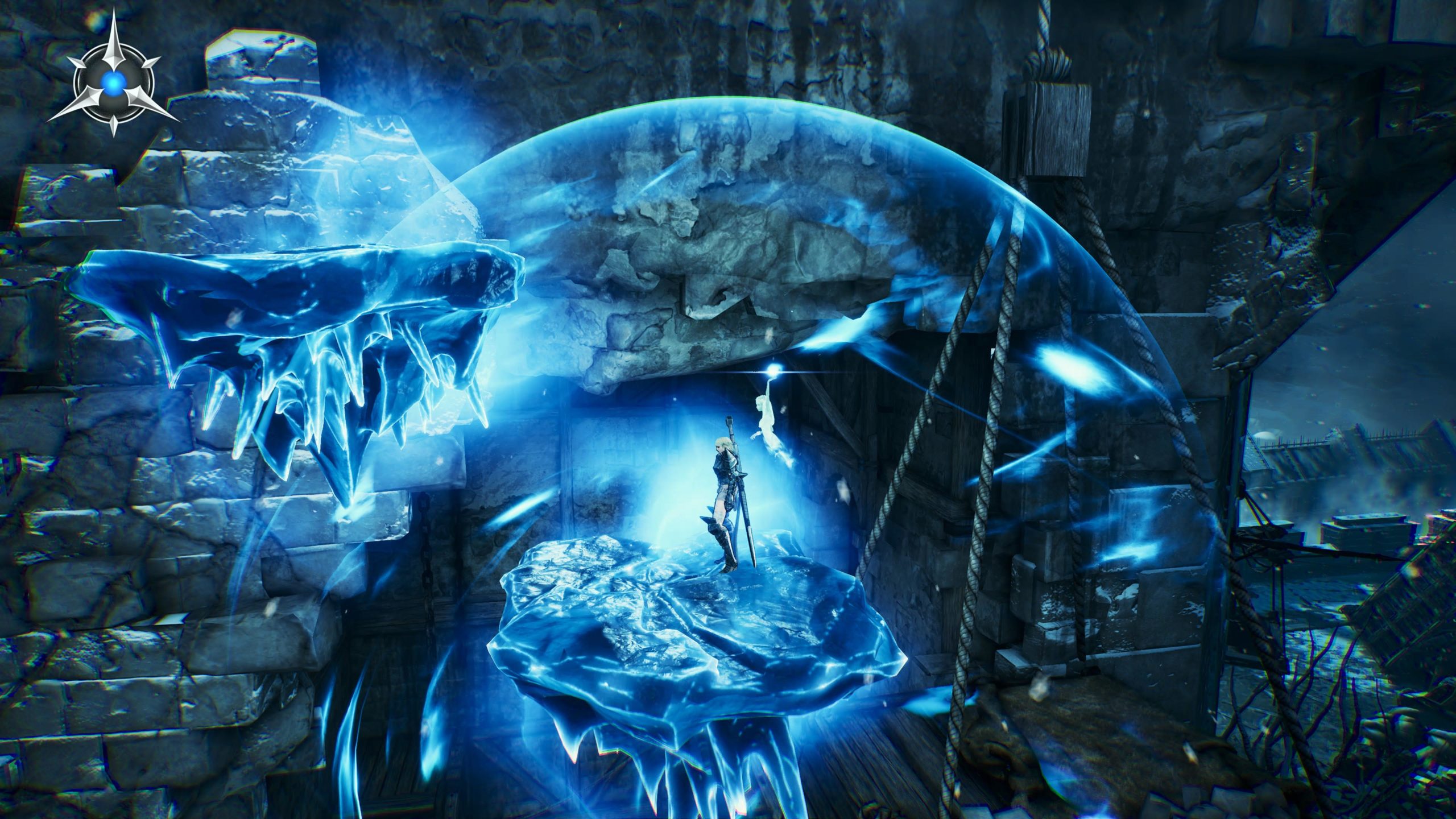
Combat in Soulstice is probably its strongest hand. Briar’s weapon can shape-shift, moving from sword, to hammer, to gloves, to bow, to whip, in the blink of an eye. Most of the types are based on weapons we’ve seen in the Devil May Cry series, but having them all available to you at the press of a direction button does make combo’ing fun. The gloves deal damage to armour, and are needed at the start of armoured types and bosses to literally dismantle their defences, before you can bring your sword in and poke the soft parts. The hammer and sword are fun, and basic melee combat packs a punch and feels good.
But that’s just Briar, you’ve also got Lute. Lute hovers over your back and performs situational ranged counters. Just hit circle and she stops projectiles, binds and slows enemies, and cancels entire moves. But it’s also a little counterproductive – you can slow a move, but you’ve still got to dodge it before it comes crashing down. You counter, then you need to move out of the way. Why not just dodge? Well because the directional attacks of most enemies can hit you almost anywhere. But training yourself to do a double tap of two different buttons when one is enough in most games is a little frustrating.
Lute also provides fields – large translucent domed areas surrounding Briar just to make combat a lot more complicated. These come in two varieties, red and blue. Wraith-type enemies can’t be hit in the normal realm, so Lute brings them into the physical with the blue field, ready for Briar to chop up. Other enemies are infested with red crystal, making them impervious unless you deploy the red forcefield, which then allows Briar to go to town. Switching between the three makes sense quite quickly, but can be fiddly when you are also contending with melee, counters, dodging and a few more bits we’ve still got to cover.
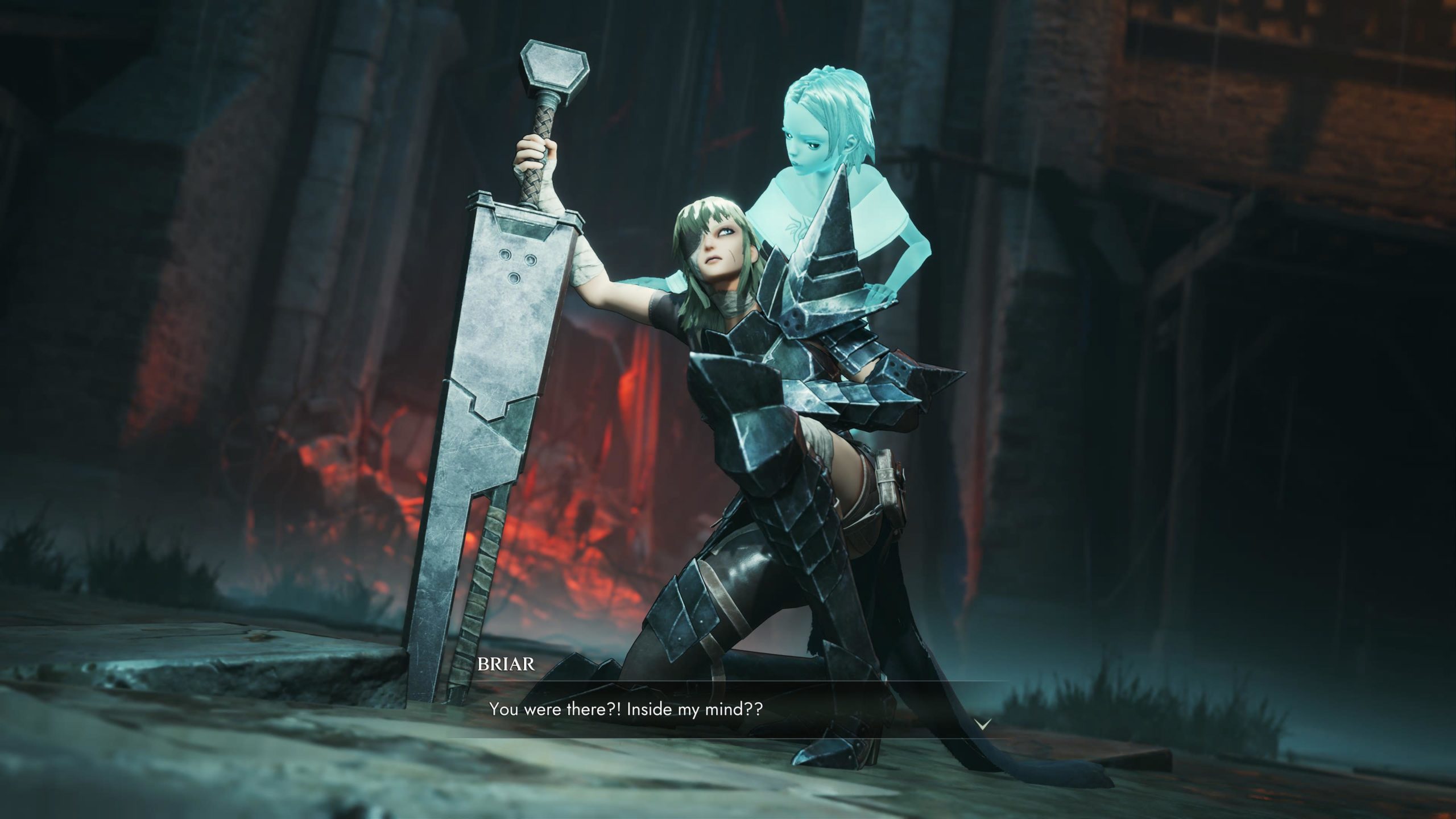
So where Soulstice adheres most to the DMC formula is maybe in the combo scoring. Encounters play out in the larger areas and will deal style points based on your combos, time taken, and damage taken. You are then rated with a medal – iron, bronze, silver, gold, platinum and diamond. You can’t see your score until you finish the encounter.
Because of these scored and defined encounter areas, instead of free-flowing scoring against any enemies ala Devil May Cry, Soulstice starts feeling incredibly scripted. Fights also become too infrequent and you spend more time hacking boxes and debris apart for red skill crystals than you do actually fighting anything alive.
However even that pales in comparison to the issues with the camera. When not in combat, the camera is fixed, usually low but wide, trying to give you a good atmospheric view of the area and your route. This is exactly what DMC does, especially in the earlier games. As you move from one fixed camera position to another, the direction you’re moving compensates so that you shouldn’t constantly jump back on yourself. Only it doesn’t really work very well, and you do, and often. I mostly just wished for a more static over-the-shoulder or God of War style camera.
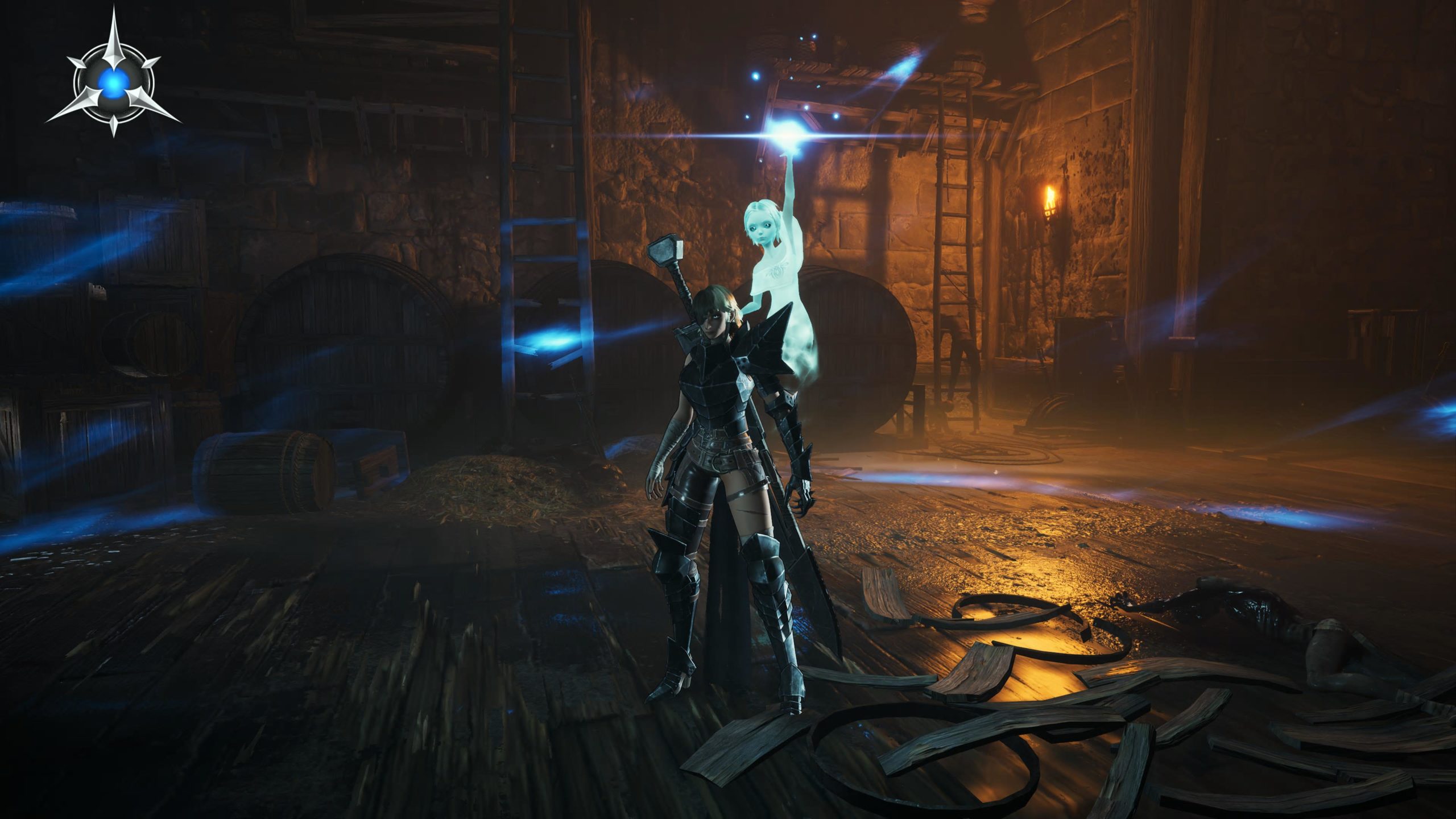
In combat, the camera is fluid. It can be manipulated if you can spare a finger, or else-wise locks to the closest enemy. But just as no plan survives first contact with the enemy, this works in principle and not in practice. The camera gets itself in too close, forgetting about other enemies that then attack from off camera. This seems to be a known issue, compensated for a little by the counter prompts still coming up on the edge of the screen. Instead of that, perhaps fix the camera?
The camera also likes to get itself trapped in a corner when you fight something large, or you’re in a small room. I lost count of the times the camera got stuck, only able to half see me, and not see the boss or enemy at all, while I had to keep wailing on it to stay in the fight.
The boss in Chapter 9 really demonstrates the issues with the combat – It demands that you use the red field to hurt the boss, then when he falls, that you use the blue field to kill the wraiths possessing him before they revive him. If you add the insane camera flying all over, locking you in corners and the combat knocking the wraiths too far away that you can’t get to them all in time, it becomes torturous, trying and failing to stop him being revived over and over. When I finally beat him, he had revived about six times. Soulstice’ combat is fun, but it’s also too unrefined and doesn’t soft lock-on enough for the demands it then makes on the player. There is a lock-on and it’s nigh-on essential to use, but like everything else it’s fiddly, goes for enemies you wouldn’t expect, and is hard to manipulate.
From Chapter 6 you get access to the pink neon Rapture-state crazed Briar. Higher damage, offensive Lute, no need for fields, and some hit-all finishers, can be a great odds leveler. You have to fight well, vary your moves and not get hit to bring your Unity with Lute up to the required point where you get access to this along with a few nice finishers.
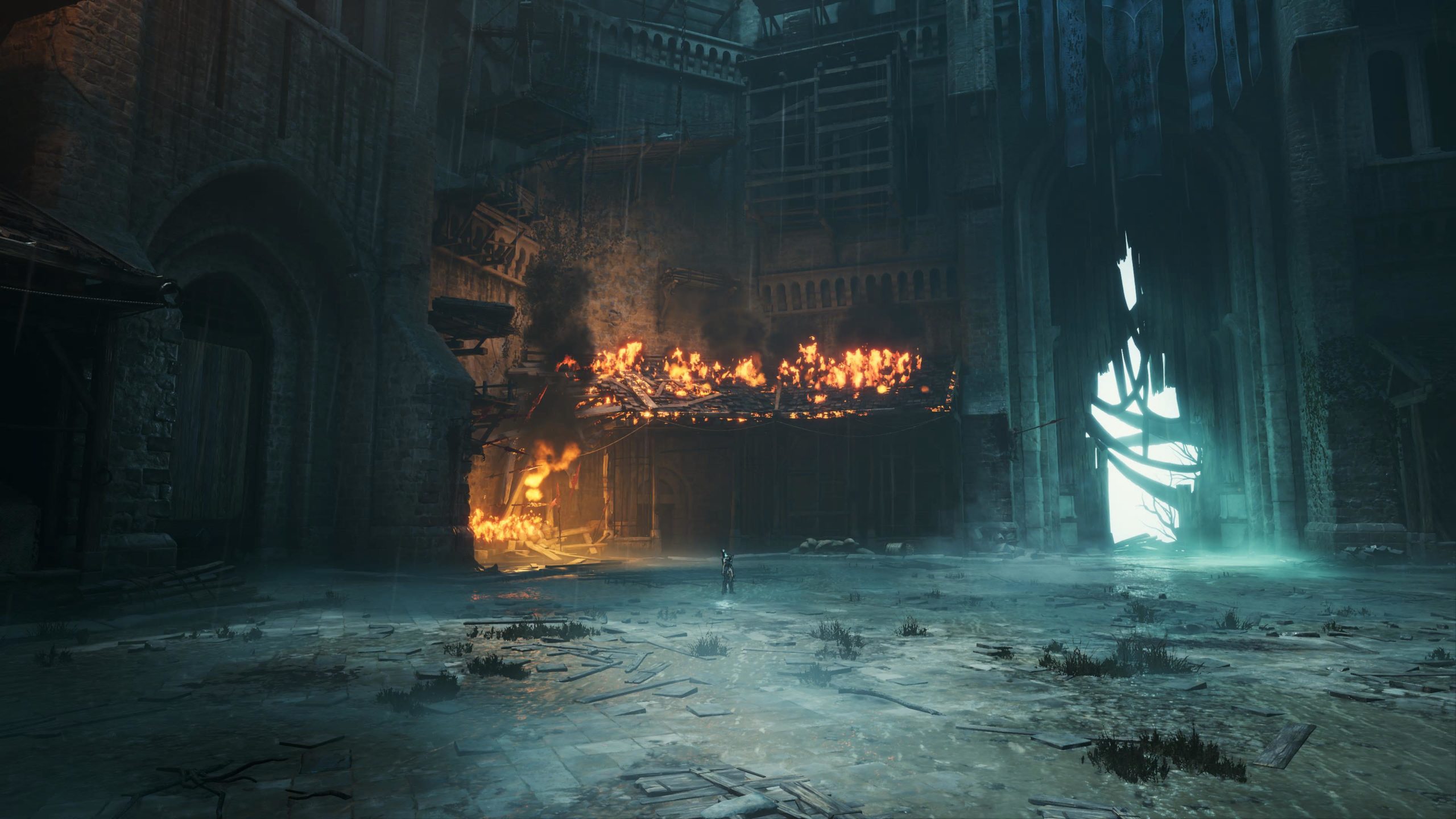
You can use all those red and blue crystals that cover the city to buy moves and finishers for Briar’s different weapons, but also five levels worth of upgrade options for Lute, making for a highly customisable combat style unique to you. In practice, it’s lots of upgrading and you can have them all so you don’t have to choose one route.
The last thing I’ll say on combat is that it’s really tough. Enemies are major sponges for damage and can take a lot of killing. Breaking through armour, or red crystal, then a full health bar that seems to tank as much as it depletes, then on larger enemies having to switch to blue field and lock-on to knock down some wraiths is very demanding when you also have a dozen other enemies clamouring to lay some smackdown of their own. Initiate difficulty I found only just manageable, and even then was frequently shown the game over screen towards the end of the game. It’s higher difficulty than the recent Devil May Cry 5, and the prospect of three further tiers of difficulty above that was beyond my skills. If you end up liking Soulstice a lot, there’s plenty of challenge to keep you going.
Some ten hours into Solstice I realised I’d barely noticed the music, so unintrusive and generic it was. The voice work done by Stephanie Joosten is great, and the two leads carry a lot of the game. The rest of the cast, especially Layton, and the twisted villains are not as good, and generate a few unintended laughs.
I should also use this moment to speak of a glitch I experienced. Largely Soulstice was glitch-free, and kept good frames and textures despite lots of enemies and action on screen. It was instead in a static memory sequence – the very memory sequence that would tell me how Lute died – where I had the game hard bomb back to the home screen three times.
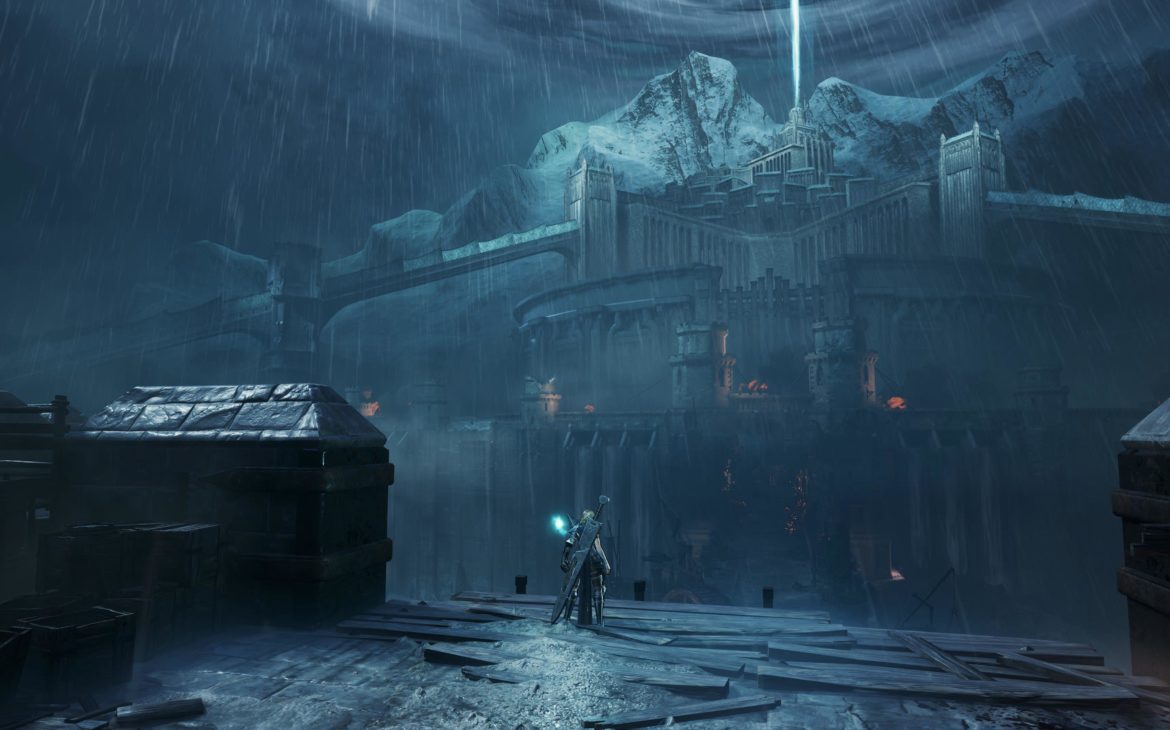
A disparaging take would be that Soulstice is a Devil May Cry clone, albeit a good one. However, that really is doing this game a disservice. I can find Devil May Cry a bit stupid at times – at no point in Soulstice did I fight wielding two motorcycles for example. Soulstice takes itself more seriously in tone than most of the Devil May Cry series.
I said earlier that Soulstice is unlike its namesake Dark Souls – but when it comes to esoteric lore and barely giving exposition or story, it’s doing some of From Software’s best work. When you barely explain the world or the backstory, you neglect to imbue your plot with stakes. There’s not much in the way of stakes in Soulstice. I felt almost nothing for Briar and Lute at the beginning, and I felt almost nothing for them by the end, because we barely learn who they are. Coupled with a fortress-like city that seems to go on forever, and rooms and areas that blend together far too much, Soulstice’s adventure begins to feel like a slog to the finish.
Where it does genuinely shine is its combat, which is varied, difficult and demanding. The camera can cause half the issues and enemies have way too much health, but controlling Briar can become effortless with practice and Lute’s situational counters never get old.
Soulstice is a melting pot of things Devil May Cry does well and adds interesting demanding combat with two characters and situational countering. However, its predictable somber story and uninteresting world work hard to drain the fun out of things and its camera wants to be more enemy than friend.

Soulstice is available now on PlayStation 5 (review platform), Xbox Series S|X and PC.
Developer: Reply Game Studios
Publisher: Modus Games
Disclaimer: In order to complete this review, we were provided with a promotional copy of the game. For our full review policy, please go here.
If you enjoyed this article or any more of our content, please consider our Patreon.
Make sure to follow Finger Guns on our social channels –Twitter, Facebook, Twitch, Spotify or Apple Podcasts – to keep up to date on our news, reviews and features.
